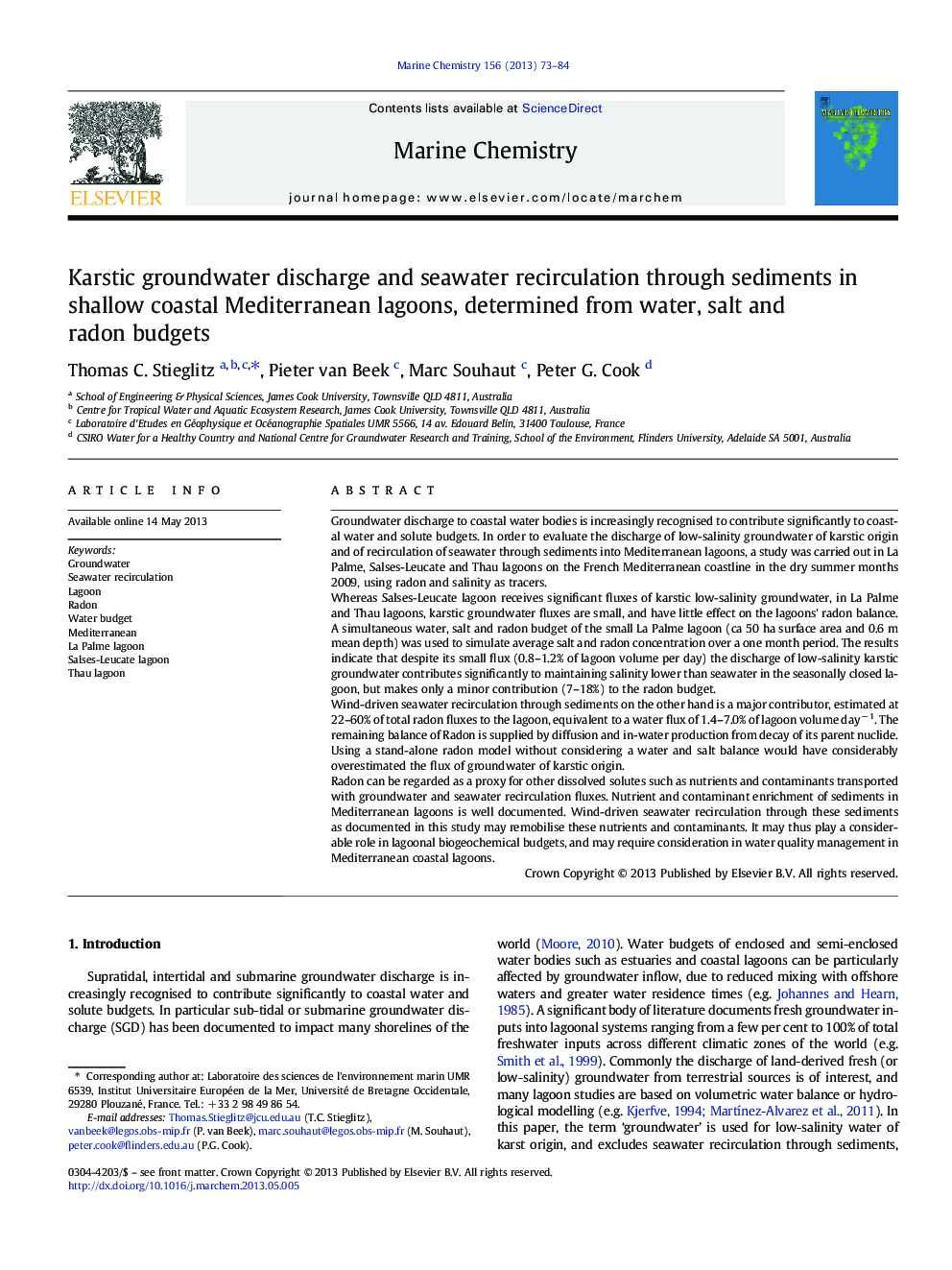| کد مقاله | کد نشریه | سال انتشار | مقاله انگلیسی | نسخه تمام متن |
|---|---|---|---|---|
| 1261317 | 1496679 | 2013 | 12 صفحه PDF | دانلود رایگان |

• A simultaneous water, salt & radon balance was applied to a coastal lagoon.
• Karstic groundwater contributes significantly to the salt budget.
• Recirculation of seawater through sediments is the largest source of radon.
• This recirculation flux may need to be considered in lagoon biogeochemical budgets.
Groundwater discharge to coastal water bodies is increasingly recognised to contribute significantly to coastal water and solute budgets. In order to evaluate the discharge of low-salinity groundwater of karstic origin and of recirculation of seawater through sediments into Mediterranean lagoons, a study was carried out in La Palme, Salses-Leucate and Thau lagoons on the French Mediterranean coastline in the dry summer months 2009, using radon and salinity as tracers.Whereas Salses-Leucate lagoon receives significant fluxes of karstic low-salinity groundwater, in La Palme and Thau lagoons, karstic groundwater fluxes are small, and have little effect on the lagoons' radon balance. A simultaneous water, salt and radon budget of the small La Palme lagoon (ca 50 ha surface area and 0.6 m mean depth) was used to simulate average salt and radon concentration over a one month period. The results indicate that despite its small flux (0.8–1.2% of lagoon volume per day) the discharge of low-salinity karstic groundwater contributes significantly to maintaining salinity lower than seawater in the seasonally closed lagoon, but makes only a minor contribution (7–18%) to the radon budget.Wind-driven seawater recirculation through sediments on the other hand is a major contributor, estimated at 22–60% of total radon fluxes to the lagoon, equivalent to a water flux of 1.4–7.0% of lagoon volume day− 1. The remaining balance of Radon is supplied by diffusion and in-water production from decay of its parent nuclide. Using a stand-alone radon model without considering a water and salt balance would have considerably overestimated the flux of groundwater of karstic origin.Radon can be regarded as a proxy for other dissolved solutes such as nutrients and contaminants transported with groundwater and seawater recirculation fluxes. Nutrient and contaminant enrichment of sediments in Mediterranean lagoons is well documented. Wind-driven seawater recirculation through these sediments as documented in this study may remobilise these nutrients and contaminants. It may thus play a considerable role in lagoonal biogeochemical budgets, and may require consideration in water quality management in Mediterranean coastal lagoons.
Figure optionsDownload as PowerPoint slide
Journal: Marine Chemistry - Volume 156, 20 October 2013, Pages 73–84